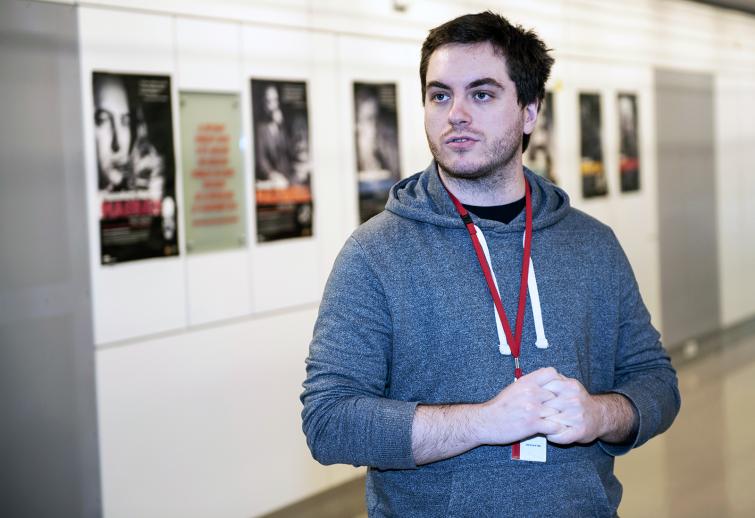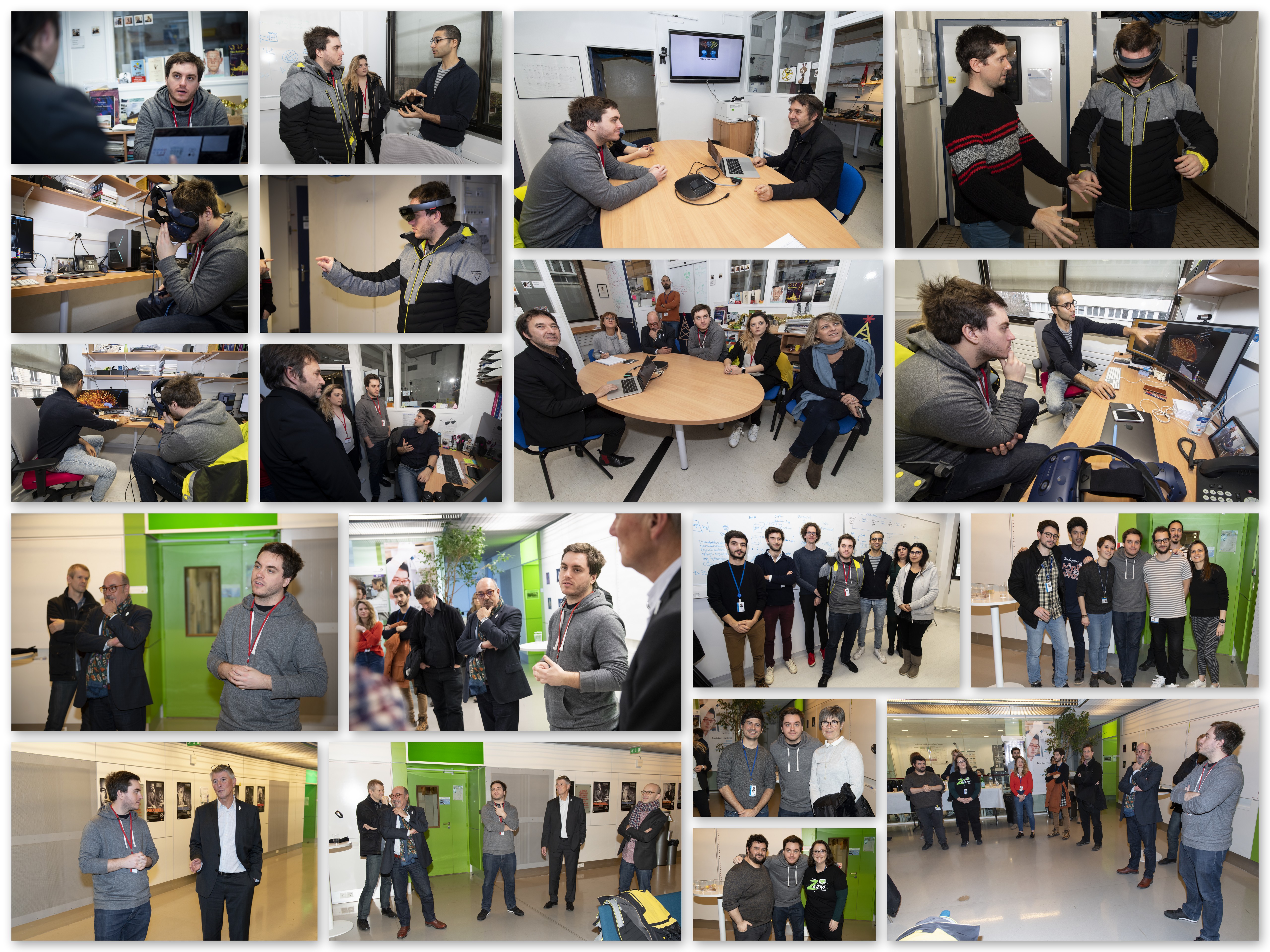
January 10, 2020
Bulletin interne de l'Institut Pasteur


Visit by ZeratoR to the Institut Pasteur on December 19
Following the "Z Event" charity marathon held over the weekend of September 20-23, 2019 – which raised an amazing €3.5 million for the Institut Pasteur –, the Department of Communications and Fundraising was keen to invite Adrien Nougaret (a.k.a. ZeratoR), one of the two people behind the event, to spend a day at the Institut Pasteur so that he could find out more about its research activities.
So on December 19, ZeratoR, visited two research laboratories:
-
the laboratory run by Jean-Baptiste Masson, for a presentation of the DIVA project developed jointly by teams from the Institut Pasteur and the Institut Curie;
-
the laboratory run by Thomas Bourgeron, Head of the Human Genetics and Cognitive Functions Unit at the Institut Pasteur and a pioneer in the discovery and study of genes associated with autism.
The presentation of the DIVA project by Jean-Baptiste Masson and Mohamed El Beheiry (PhD, a post-doctoral fellow at the Institut Pasteur) demonstrated how virtual reality and especially machine learning can be used in neuroscience to visualize 3D images of living organs.
Based on this technology, the Decision and Bayesian Computation five-year group, led by Jean-Baptiste Masson at the Institut Pasteur, in collaboration with the Light-Based Observation and Control of Cellular Organization laboratory at the Institut Curie, has developed a new software platform known as DIVA: Data Integration and Visualization in Augmented and Virtual Environments.
The DIVA software platform enables scientists to use 3D visualization to view and process their scientific images (e.g. neurons in mouse brains or tumors in human organs).
The platform, currently being tested in several hospitals, could soon be used by surgeons to help them prepare for complex surgical procedures on organs, for example allowing them to visualize a breast cancer tumor more precisely and define its structure more accurately.
In November 2018, the DIVA project – which combines human cognition, virtual reality and machine learning – received the "DeepTech" award at the Start-Ulm competition.
Thomas Bourgeron explained to ZeratoR how, back in 2003, his team first identified mutations in two genes present on the X chromosome of two brothers, one diagnosed with autism and the other with Asperger’s syndrome. A link was established between genetic mutation, synapse function and autism spectrum disorder. Four years later, the team identified another gene, this time one that plays a role in synapse structure itself. Then in 2008 the scientists discovered a mutation in a gene involved in melatonin synthesis in some people with autism.
It is now accepted that genetic factors play a vital role in vulnerability to autism, but the extreme variability of autism spectrum disorder, coupled with the huge number of mutations, are making the scientists' task difficult. Although in some cases a variation in a single gene can explain most of a patient's symptoms, in other cases the genetic situation is much more complex, sometimes involving more than a hundred genes which individually would have no effect but together increase the risk of autism spectrum disorder.
The Institut Pasteur hosts the world's largest database on autism in terms of the information gathered: brain imaging, electroencephalograms, genomic data, psychological profiles, intelligence quotient (IQ), quality of life, behavioral tests, etc.
Following these explanations, ZeratoR was given the chance to try a prototype of a mixed-reality video game aimed at children with autism. This invention, developed by Guillaume Dumas in Thomas Bourgeron's unit in collaboration with the company Actimage, goes beyond virtual reality, using Microsoft Hololens glasses to project holograms of balloons into the player's environment. The player's task is to find them and burst them with his or her hand. Based on the data in the game (e.g. reaction times), artificial intelligence algorithms are then applied to evaluate the player's motor and cognitive skills, thereby helping doctors with their diagnosis.
After these inspiring visits, a closing drink was held, attended by Stewart Cole and Olivier Schwartz, so that Institut Pasteur staff, and especially young researchers, could meet ZeratoR and ask questions.
Stewart Cole and Christian Vigouroux warmly thanked ZeratoR for giving the Institut Pasteur the opportunity to benefit from the Z Event, which attracted considerable media attention and raised a record sum of money.
Photos : @Institut Pasteur - François Gardy
